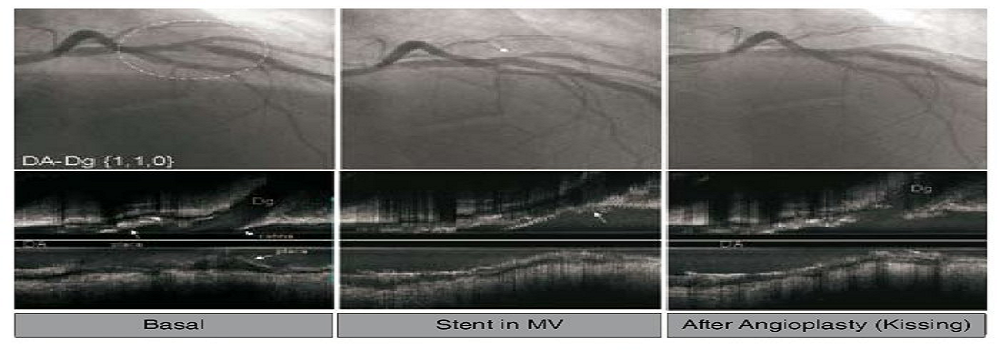Continuing Education
Get Cardiology related Articles, Journals, Videos and more details at Radcliffe Cardiology site.
Online Cardiovascular Disease
Go to read Online Cardiovascular Disease relarted articles via atrial fibrillation association afa.
Cardiology Mayo Clinic
Cardiology Mayo Clinic provides informative info about cardiology at RC site.
Cardiovascular Research Foundation
Free and register PDF and journales available at here!!!
Cardiology Video
Arrange seminar and online video conference by expert cardiologist, Visit at site.
Monday, 10 November 2014
Fractional Flow Reserve Measurement and Optical Coherence Tomography in Guiding Coronary Interventions
By Unknown01:58Fractional Flow Reserve Measurement, Multivessel Disease, Optical Coherence Tomography (OCT)No comments

Blockage of oxygen-rich blood supply to the heart due to the plaque build-up in coronary arteries is the primary cause for heart attacks. Termed as Coronary Artery Disease (CAD), this heart problem occurs due to a condition called atherosclerosis. In some cases, plaque build-up is not just limited within a single epicardial vessel but to multiple vessels known as Multi vessel CAD or coronary multivessel disease. If defined in medical terms - "a condition where 70% or greater stenosis is affected in at least one major epicardial vessel and 50% or greater stenosis is affected in at least other major vessels".
Though coronary angiography has been considered as the ‘gold standard’ for diagnosing ischemic heart conditions, it has many limitations. It often failed in providing comprehensive and accurate information about the physiological significance of lesions. That is when the well-validated Fractional Flow Reserve measurement came into the limelight. Performed along with the cardiac angiogram, it has been proved as a safe and reliable diagnostic tool to differentiate between ischemic and non-ischemic stenosis.
On the other hand, medical imaging techniques such as Intra Vascular Ultra Sound (IVUS) and Optical Coherence Tomography (OCT) have found a place in interventional cardiology. Functional severity of stenosis, plaque morphology and intraluminal coronary dimensions are some of the many features that can be assessed with IVUS. Whereas, OCT is slightly more efficient than the IVUS technique as it offers microscopic visualization of ten-times higher resolution. Advanced Optical Coherence Tomography technique renders clear and detailed pathophysiology of atherosclerotic plaque.
In terms of treatment choices for multivessel diseases, we presently have surgical management and medical therapy. Revascularization methods include Percutaneous Coronary Intervention (PCI) or angioplasty and Coronary Artery Bypass Graft (CABG) or bypass surgery. Reliable Fractional Flow Reserve Measurement value along with angiographic data helps physicians decide between PCI and medical therapy for single vessel CAD. Negating the need of repeated revascularization and relieving the likelihood of angina to a greater extent, CABG appears to be a superior choice over PCI when it is concerns treating multivessel disease. However, with the advancements in catheterization, medical imaging and stenting techniques, physicians are shifting away from the aggressive bypass surgical procedures and opting for less-invasive percutaneous treatments that ensure favourable long-term outcome. Yet, the optical treatment strategy for multi vessel CAD remains a controversial topic.













